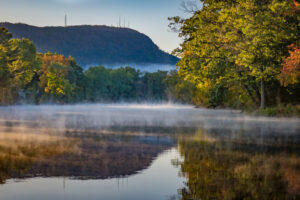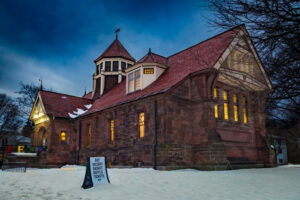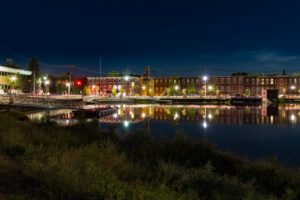
We all come from someplace and this is the little part of America that I call home. Being a native to Massachusetts, I have lived in Easthampton for the largest portion of my life with my wife and three children and in the later years, my in-laws lived with us in an extended family arrangement. Though I grew up in other communities in Western Massachusetts, I consider Easthampton my home town. Easthampton is a small New England town located in the Pioneer Valley region of Western Massachusetts with a population of about 16,000 people. Easthampton is a city by governance but retains the name “Town” in its official name. First settled by European immigrants in 1664 and was originally part of Northampton its northern neighbor.

It was incorporated as a town in 1809 being the youngest town in Hampshire County by date of incorporation. The town grew primarily around the Manhan River as an agricultural community and later during the Industrial Revolution mills and factories were built mainly in connection with textile manufacturing and its offshoots. The first of these, the Williston-Knight Button Company, was established in 1847 by Samuel Williston, son of the town’s first minister, a Congregationalist named Payson Williston. The company specialized in cloth-covered buttons, a coveted item at the time. After some success from federal wartime contracts during the World Wars, beginning in the early 1960s the mills and factories had a number of closures that hit the town hard.

Starting in the 1970s Easthampton was at the forefront of converting the mills and factory buildings into new uses which have attracted a small community of artists and craftspeople due to the lower cost of living compared to nearby Northampton, a hub of the bohemian community regionally. This growth has produced new arts and cultural events such as the Art Walk Easthampton, in which visual, music and performance artists showcase their talents at venues around the town. Easthampton has a number of points of interest such as Mount Tom State Reservation that borders the eastern part of the town, and many local residents hike up to enjoy the view of the Pioneer Valley from the rock ledges of Mount Tom, with a summit elevation of 1,202 feet. Also, the Arcadia Wildlife Sanctuary part of the Massachusetts Audubon Society and the Manhan Rail Trail bicycle path that runs through the town and connects with neighboring Northampton. Easthampton is also home to the Williston Northampton School, a co-educational, day and boarding college-preparatory school founded in 1841. Easthampton is a great little city in the heart of the education and arts communities of Hampshire County with all the flavor of an old New England town but with a revitalized downtown and former mills that have contributed to its vitality and community pride.
![]() Easthampton
Easthampton![]() Hampshire County, Massachusetts
Hampshire County, Massachusetts![]() N 42° 15′ 56.5″ W 72° 40′ 10.1″
N 42° 15′ 56.5″ W 72° 40′ 10.1″


